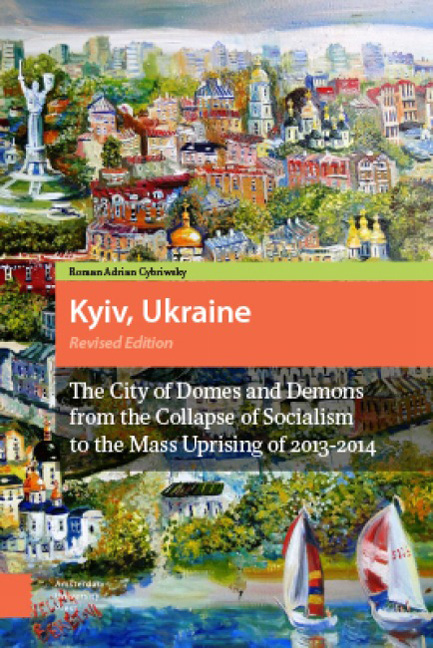 Kyiv, Ukraine
Kyiv, Ukraine Book contents
- Frontmatter
- Dedication
- Contents
- List of Illustrations and Tables
- A Note about Transliteration
- Preface and Acknowledgements
- 1 Far from Heaven
- 2 The Missing Museum of the History of the City of Kyiv
- 3 Sketches from the Capital
- 4 Soviet Ways, Post-Soviet Days
- 5 Historical Memory
- 6 The Center of Kyiv
- 7 A Geography of Privilege and Pretension
- 8 Landscapes of Struggle
- 9 “Suburbia”
- 10 Seamy Stories
- 11 The Defenders of Kyiv
- 12 Reflections
- Postscript
- References
- References
6 - The Center of Kyiv
Published online by Cambridge University Press: 10 December 2020
- Frontmatter
- Dedication
- Contents
- List of Illustrations and Tables
- A Note about Transliteration
- Preface and Acknowledgements
- 1 Far from Heaven
- 2 The Missing Museum of the History of the City of Kyiv
- 3 Sketches from the Capital
- 4 Soviet Ways, Post-Soviet Days
- 5 Historical Memory
- 6 The Center of Kyiv
- 7 A Geography of Privilege and Pretension
- 8 Landscapes of Struggle
- 9 “Suburbia”
- 10 Seamy Stories
- 11 The Defenders of Kyiv
- 12 Reflections
- Postscript
- References
- References
Summary
A Taste of History
Kyiv has two hearts, maybe three. The undisputed historical center of the city is the site of the old walled city of Prince Volodymyr the Great (r. 980-1015), and the site of the enlarged walled city that was put together during the long reign (1019-1054) of his son Yaroslav the Wise. This zone was the capital of ancient Rus and stood high on promontories above the Dnipro River. The main hill is today called Volodymyr's Hill (Volodymyrska Hora) and the main thoroughfare is Volodymyr's Street. There are some remains of an old gate to Yaroslav's city called Zoloti Vorota (Golden Gate) enclosed within a museum-like structure, but the main treasure from early history is the St. Sophia Cathedral complex, a UNESCO world heritage site with origins that go as far back as the first half of the 11th century. There are many newer additions to St. Sophia as well, and also centuries-old reconstructions and expansions of earlier construction, so not nearly all of this complex is the product of the princely period. It is, however, one of the two main historic sites in Kyiv and is intimately identified with the glory of Rus and historic Christianity, and with the city's early reputation as a “New Jerusalem.” The other most important historic site is the Monastery of the Caves Complex (Pecherska Lavra), also a UNESCO world heritage site. It is on slopes that rise from the river south of the first center and dates to 1051. It is the centerpiece of Kyiv's so-called third heart, the Klov Hill (Klovska Hora) and the Pechersk district. That area grew up around the nearby monastery, and then in the 19th century became known for a large fortification and munitions manufactory for the Imperial Russian army.
The second heart of Kyiv is Podil (Russian: Podol), a district of trade and commerce at the elevation of the river. It was a port and the distribution point for food that was brought into the city, and it came to be known in later centuries for its various trade fairs and for the sale of grain and grain futures, horses, and other livestock. .
- Type
- Chapter
- Information
- Kyiv, UkraineThe City of Domes and Demons from the Collapse of Socialism to the Mass Uprising of 2013–2014, pp. 151 - 188Publisher: Amsterdam University PressPrint publication year: 2014


